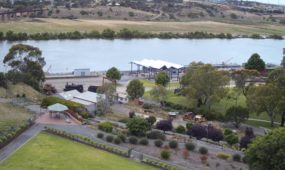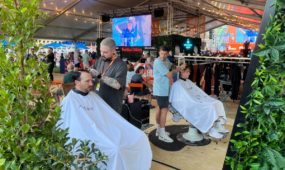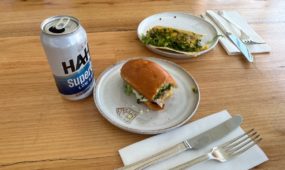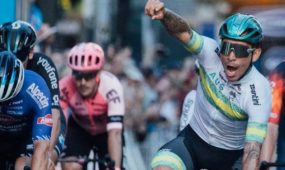The newest wine attraction in Australia is anything but square
Tourism
There are grander and more expensive cellar doors in the world, but for sheer originality and invention South Australia’s newly-opened d’Arenberg Cube is unrivalled.

Sign up to receive notifications about new stories in this category.
Thank you for subscribing to story notifications.
For leading Australian winemaker Chester Osborn, pictured below, it’s the realisation of a 14-year dream, but for the McLaren Vale wine region 40km south of the South Australian capital of Adelaide, the Cube could bring tens if not hundreds of thousands more wine tourists to visit one of the world’s most unusual and dramatic cellar doors.
The five storey AUD$15 million glass-encased steel and concrete structure was inspired by Rubik’s Cube – an architectural puzzle four modules wide, four high – seeming to float above the entrance ground floor, and four deep. The architectural twist is that the two top floors are askew, rotated on their axis, just as if you’d twisted your Rubik’s Cube – which both architects and builders agree have made it the most difficult project on which they’ve ever worked.
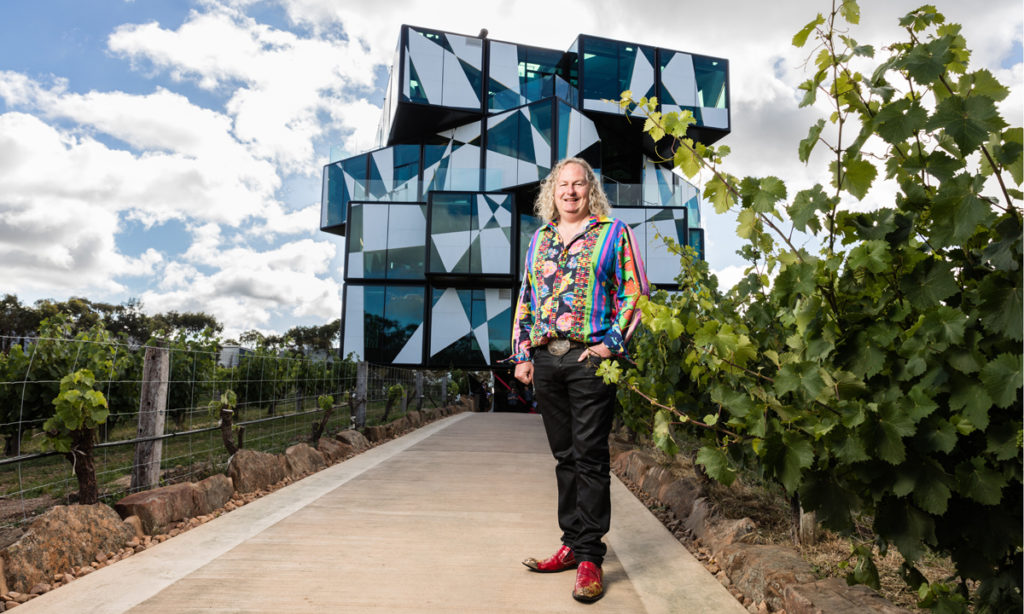
As visitors approach the entrance there’s a haunting background sound, created by a local DJ but the instrument making it is a weather station. As the weather changes each of eight parameters (temperature, humidity and so on) talk to a unique musical playback system along a range of keys, tones and volume.
But it’s inside the d’Arenberg Cube where Chester’s colourful imagination has run riot, stretching the limits of technology and challenging visitors from the moment they enter through mirrored stainless steel doors that fold back, origami-style.
Immediately guests are confronted by an upended black and white bull cradling a polygraph (lie detector) control panel, the first exhibit in what Chester describes as an Alternate Realities Museum in which everything has more than one meaning, and everything is wine focussed.
“I never wanted it to be compared to MONA (Hobart’s famous Museum of Old and New Art),” Chester says.
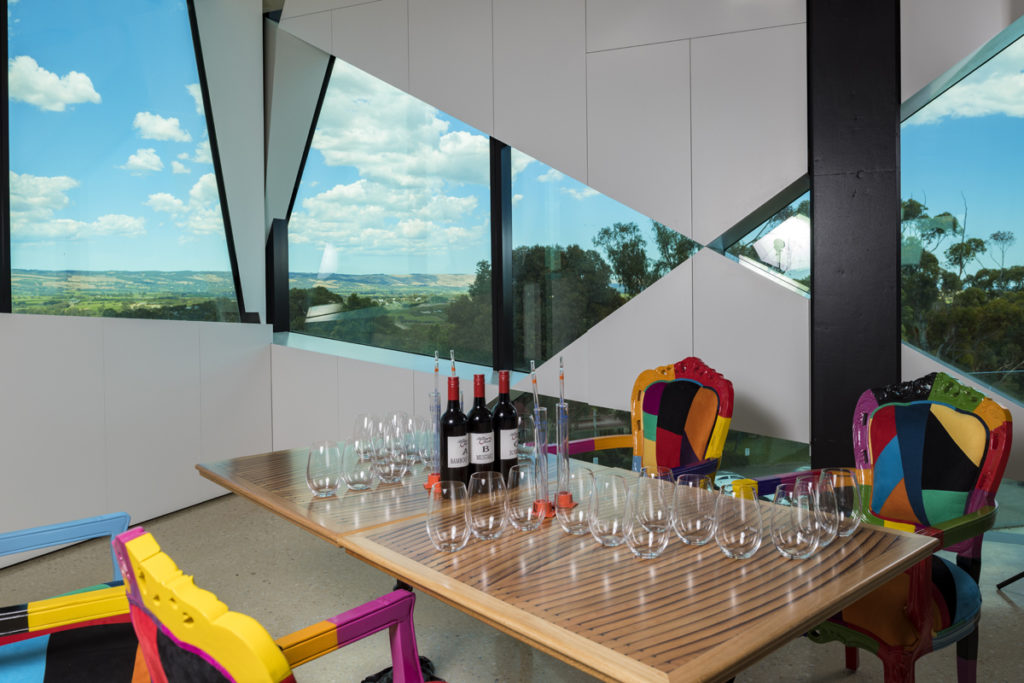
“This is, after all, a cellar door – but it’s also an art gallery. Like MONA there’s a bit of sex and death in here, but it’s really all about wine and alternate realities. Everything has a double or triple meaning.”
The bull and the lie detector, for example. Many winemakers talk about organics and biodynamics without any real commitment … to which Chester’s art installation screams “BS”.
Chester backs his less than subtle art choice with 200ha of certified biodynamic vineyards, making d’Arenberg the largest biodynamic winemaker in Australia.
Next, two peep shows – one housed in a rusty old oven, the other in an ancient refrigerator – show six hours of six people (including Chester) partying while drinking Domaine de la Romanée-Conti, and there’s still so much to see just on this level.
There’s the Sensory Room, for example, with 44 wine flagons mounted on bicycle handlebars, each connected to a bike horn with rubber puffer. Beep the horn and inhale – what a hoot.
“We’re trying to get the senses really alive and excited by now,” Chester explains.
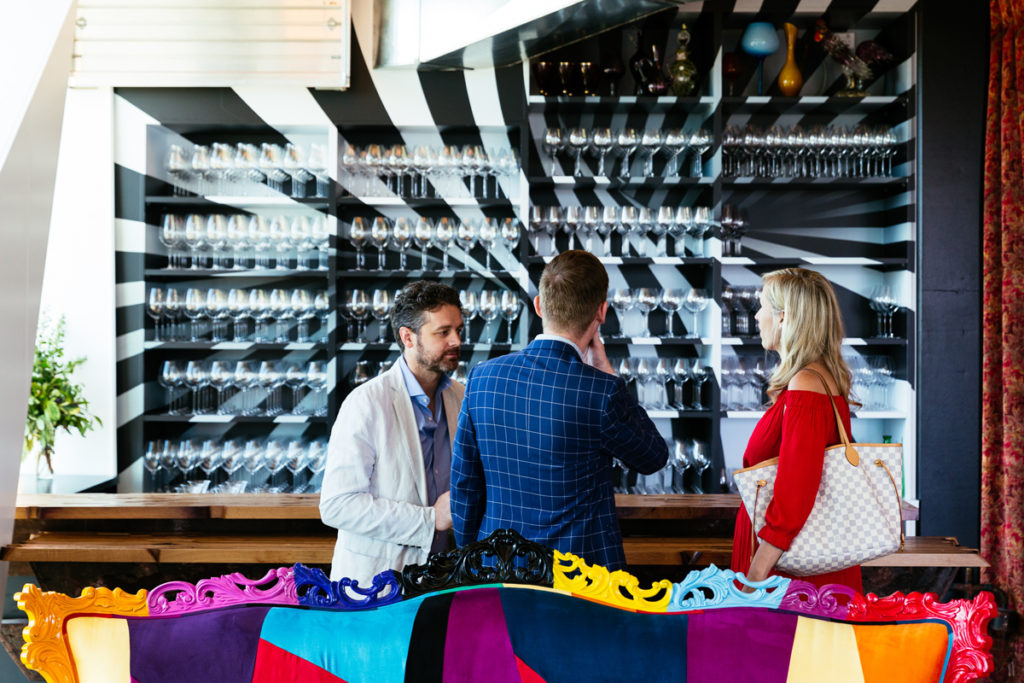
Given that d’Arenberg produces 72 different wines under 60 labels there are plenty of aromas to choose from.
Just around the corner is the 360 Experience with a circular video depicting various artists’ impressions of each group of d’Arenberg wines, or what Chester describes as “an interdimensional voyage through the alternate realities inspired by the visual art of our labels.”
Chester Osborn, 55, who says he likes to paint and sculpt when he’s not fully occupied as chief winemaker and futurist for the company his great grandfather Joseph Osborn founded 105 years ago, has filled any vacant space with art pieces and installations he’s either commissioned or collected over the years.
One of the most confronting is the Quiet Space Fermenter, a room that gives the impression of being inside a wine fermenter featuring thousands of dangling VHS video tapes on which images of feet treading a fermenter are projected.
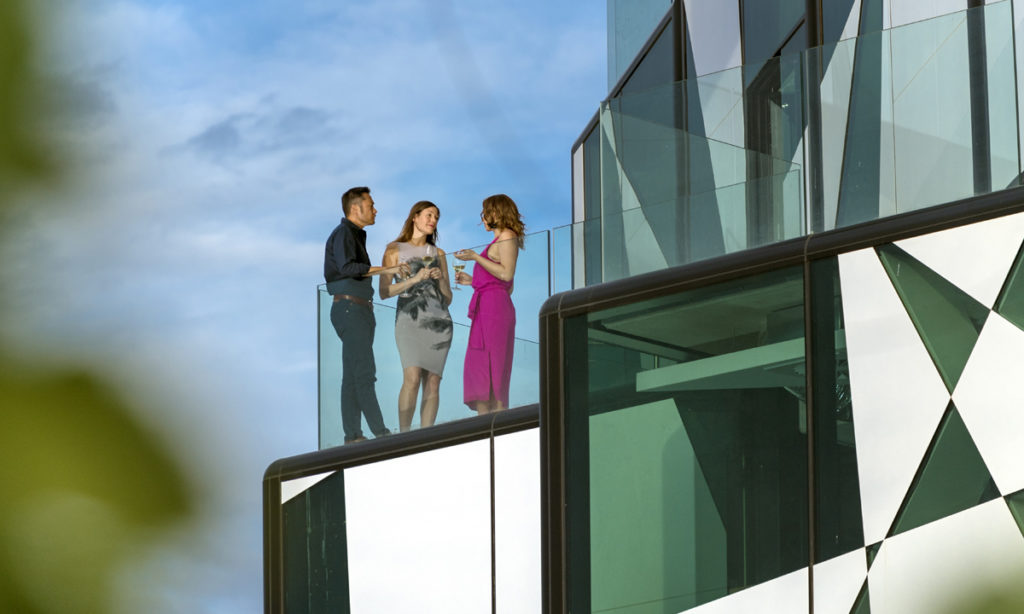
Chester calls this room “claustrophobic, like falling over and being completely immersed in a fermenter of black grapes.” At its centre is the quiet space – “ like the quiet moment before you die” – with a 3D holograph of a skeleton arm, symbolic of both death and the iconic d’Arenberg wine The Dead Arm, courtesy of South Australian company Voxon Photonics.
There’s a lift to the upper floors but far more entertaining is the completely mirrored stairwell featuring caricatures of d’Arenberg’s range of wines by Australian cartoonists. The second floor is a multi-function space for tastings and blending classes, while the third floor houses the d’Arenberg Cube restaurant.
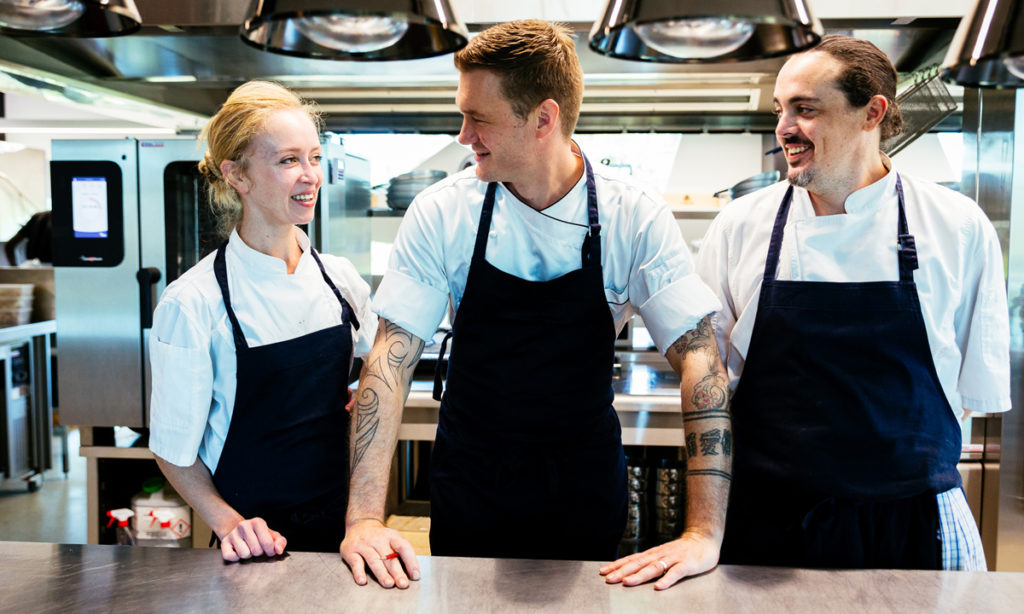
This is not the place for a casual snack. With South African husband and wife team Brendan Wessels and Lindsay Dürr, above, in charge of the kitchen the menu options include a “long” degustation lunch, the Sisypheanic Euphoria (allow up to three hours) and an “extra long” lunch, the Pickwickian Brobdingnagian (allow at least four hours). It will be quite an experience, from the dining chairs that explode with colour and tables crafted from old oak barrels, to a 3D food printer in the kitchen.
The top floor is an all glass tasting room – four glass bars made up of 115 televisions featuring opaque projections of a naked female underwater swimmer, floor to ceiling windows on all sides – even a glass ceiling, with 16 two-tonne glass panels topped with 16 massive umbrellas that automatically retract and fold in a gale.
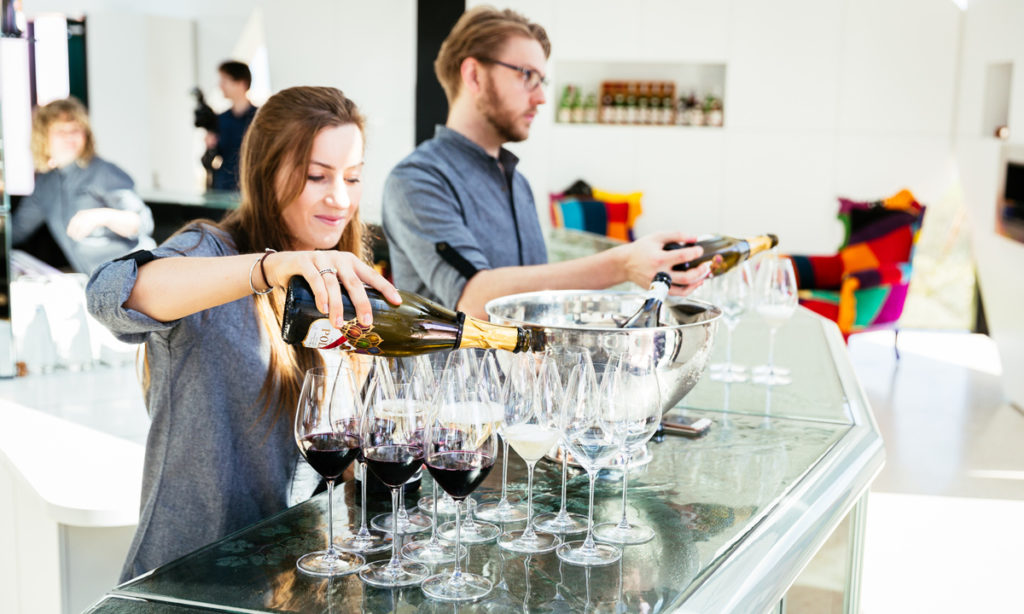
Among the many hundreds of installations and artistic creations filling the Cube, only once did Chester’s vivid imagination beat the available technology. At the entrance, a sharp left turn was to lead to a small “wine fog room”, a vinous sensory overload with the visitor immersed in a thick fog of whatever happens to be the wine of the day: breathe it, feel it, wear it.
It will happen, but only when they’ve worked out how to prevent the wine fog from setting off the fire alarms.
The d’Arenberg Cube opened to the public on December 14. The cellar door is open daily 10am – 5pm.
Jump to next article
